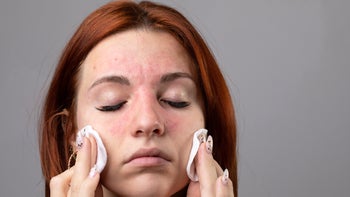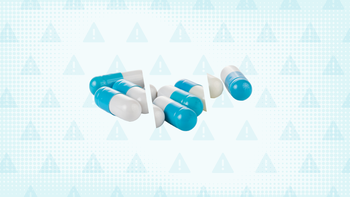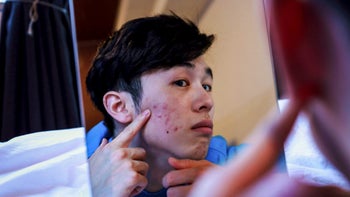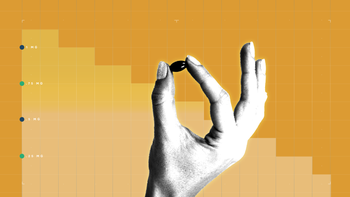
How to Tell the Difference Between 3 Common Types of Acne (With Images)
Key takeaways:
There are three main types of acne: comedonal, papulopustular, and nodulocystic acne.
Comedonal acne is caused by clogged pores, not inflammation of the skin. This is easier to treat than inflammatory acne.
The best acne treatment for you depends on which type of acne you have.
Starting acne treatment early can help prevent scarring, so reach out to your primary care provider or dermatologist early on to put together a treatment plan.
Access savings on related medications
Table of contents
Blemishes, bumps, pimples, breakouts — there are plenty of words to talk about acne. But not all acne is the same. There are different types of acne depending on whether spots are caused by inflammation or clogged pores. The treatment options are different, too.
But knowing which kind of acne you have — and how best to treat it — takes a trained eye.
1. Comedonal acne (clogged pores)
Comedonal acne is considered “non-inflammatory,” meaning the skin isn’t inflamed. This type of acne happens because the pores in the skin are clogged. Clogged pores can happen when there’s too much oil or bacteria. It can also happen when dead skin cells don’t shed properly or because of hormonal changes. Clogged pores can cause pimples called whiteheads and blackheads.
One Prescription + One Pump + Once a Day
Introducing CABTREO: the treatment that has clindamycin phosphate, adapalene, and benzoyl peroxide all in one topical application. Now cash pay patients pay no more than $100 using GoodRx.

Whiteheads
Whiteheads are also known as “closed comedones.” These happen when your pores become clogged all the way through, creating a little white or flesh-colored bump on top of your skin.
You can’t remove or fix whiteheads by squeezing them. So don’t try to pop them on your own. This can lead to scarring.
Blackheads
Unlike whiteheads, blackheads look black on the skin’s surface (the color is not from dirt, but from melanin pigment and exposure to air). They’re known as “open comedones.” This is because the head of the pore stays open, while the rest of the pore is clogged. You can remove blackheads by squeezing them. But again, this isn’t recommended because it can cause scarring.
What do whiteheads and blackheads look like?
Whiteheads and blackheads look like their names sound, so they’re fairly easy to spot.


Treatment for comedonal acne
Getting rid of blackheads and whiteheads begins with proper skin care. The products you use on your skin and in your hair can clog your pores. Choose products that are labeled “non-comedogenic,” meaning they’re less likely to make you breakout. And try to avoid using pore strips on blackheads because they are abrasive and can damage your skin, making acne worse.
You can treat comedonal acne with over-the-counter (OTC) treatments, but sometimes stronger prescription medications are needed.
Effective OTC treatments and active ingredients for comedonal acne include:
Sulfur
Low-strength adapalene (Differin)
These treatments help remove dead skin cells and excess oil. Sulfur, salicylic acid, and benzoyl peroxide can be applied directly to the acne spots or used as an entire facial treatment. Benzoyl peroxide is the most effective option, while sulfur is the mildest on your skin. Salicylic acid may help prevent comedonal acne from returning in the future.
Adapalene is a type of retinoid, the most effective treatment for all types of acne. It should be applied to the entire affected area (not spot treatment) and can take 3 or 4 weeks to start working. If an OTC option isn’t working, you may need a prescription-strength retinoid like tretinoin (Retin-A) or trifarotene (Akleif).
2. Inflammatory acne (pimples)
Inflammatory acne is the medical name for pimples. There are two types of pimples — papules and pustules.
Papules
Papules are small red bumps. They form when oil or excess skin cells blocking a pore mix with bacteria on your skin. The infected contents of the blocked pore spill out into the surrounding skin tissue, causing an inflamed lesion.
Pustules
Pustules are papules that contain pus. They are bulging bumps with a white center and red, violet, or brown inflamed skin surrounding them. They usually occur in clusters on the chest, face, or back.
Like papules, pustules can form when a blocked pore gets infected. But they can also be caused by hormonal changes in the body.
What do papules and pustules look like?
Papules look like a smooth red, violet, or brown skin bump. Unlike pustules, papules do not contain pus. Their exact appearance can vary based on the color of your skin.


Treatment for inflammatory acne
Inflammatory acne is treated with the same OTC medications used for comedonal acne, along with some additional treatments, including:
Prescription-strength retinoids help with overall inflammation.
Antibiotics help get rid of C. acnes and lower inflammation. Benzoyl peroxide is combined with antibiotics to help prevent bacteria from becoming resistant.
Birth control pills help lower androgen hormone levels (like testosterone), which contribute to acne.
Spironolactone (Aldactone) is a blood-pressure medication used “off-label” to treat acne by lowering androgen hormone levels.
And like with comedonal acne, popping pimples may worsen breakouts and cause scarring, so don’t try to squeeze them. Only your doctor can safely drain pustules.
3. Nodulocystic acne
Nodulocystic acne is when severe breakouts happen much deeper in the skin. This type of acne can be painful and leave permanent scars. It can affect the face, chest, back, and buttocks.
Nodules
Nodular acne consists of flesh-colored, brown, or red bumps. They’re larger than papules and located deep under the skin’s surface. These occur when papules get more inflamed and grow bigger and deeper. A nodule is different from a cyst in that it doesn’t have any pus, so it feels hard to the touch.
Cysts
Acne cysts are pus-filled bumps that are red or violet in color. They’re larger than pustules and located deep under the skin’s surface. They’re more inflamed and can be quite painful. Cysts are usually the same size as nodules, but they’re softer. This is because cysts are pus-filled and can burst, infecting the surrounding skin.
What does nodulocystic acne look like?
Nodulocystic acne occurs deep under the skin, so it can cause a lot of inflammation that’s painful to touch. Beyond how nodules and cysts feel, there are some visual clues to look for.


Treatment for nodulocystic acne
Since OTC treatments work on the surface level of your skin, they aren’t as effective for this type of acne. If you think you have nodulocystic acne, it’s best to see a dermatologist right away.
Early, aggressive treatment can save you from painful breakouts, permanent scarring, and possible emotional distress. Your dermatologist can help you treat nodulocystic acne with medications like:
Isotretinoin, an oral retinoid also sold under the brands Claravis, Myorisan, Zenatane, and others
Antibiotics
Topical retinoids
Birth control pills
Spironolactone (Aldactone)
You might even need multiple medications to get rid of nodulocystic acne. Your provider may suggest injecting stubborn nodules and cysts with steroids to treat them directly and get rid of the inflammation.
How do you know what type of acne you have?
A good way to tell what type of acne you have is through the presence (or absence) of breakouts that leave scars:
Comedonal acne (blackheads and whiteheads) typically heals without leaving a mark.
Papules and pustules can leave red or dark marks that fade with time.
Nodulocystic acne is more likely to leave textural scarring, dents, and pits.
Keep in mind that you can have more than one type of acne at the same time. And your breakouts might change over time. And acne can change during the phases of your menstrual cycle.
The bottom line
Acne can appear as blackheads and whiteheads, papules and pustules, or nodules and cysts. Comedonal acne and mild-inflammatory acne can be treated with topicals. People with more severe cases of inflammatory acne and almost all people with nodulocystic acne will need pills to clear up their acne. That is why it’s best to talk with your dermatologist to figure out which type of acne you have and start treatment early.
Why trust our experts?



Images used with permission from VisualDx (www.visualdx.com).
References
American Academy of Dermatology Association. (n.d.). 10 skin care habits that can worsen acne.
American Academy of Dermatology Association. (n.d.). Acne: Signs and symptoms.
Kircik, L. H. (2013). The role of benzoyl peroxide in the new treatment paradigm for acne. Journal of Drugs in Dermatology.
Newman, M. D., et al. (2011). Therapeutic considerations for severe nodular acne. American Journal of Clinical Dermatology.
Rubin, I. K. (2021). Efficacy of a non-comedogenic hair care regimen for the reduction of mild-to-moderate truncal and facial acne: A single-arm 8-week study. Journal of Drugs in Dermatology.
Sutaria, A. H., et al. (2023). Acne vulgaris. StatPearls.

























